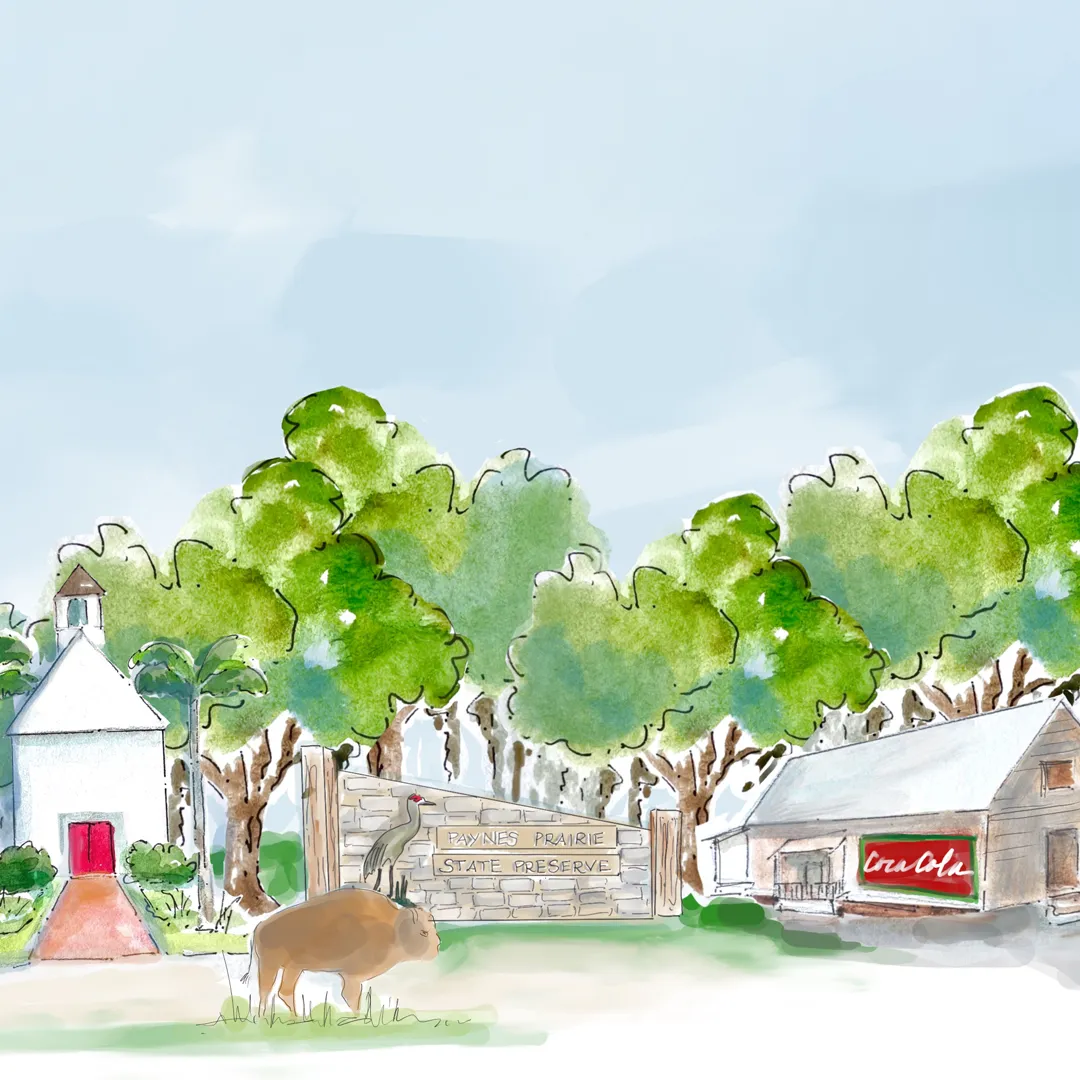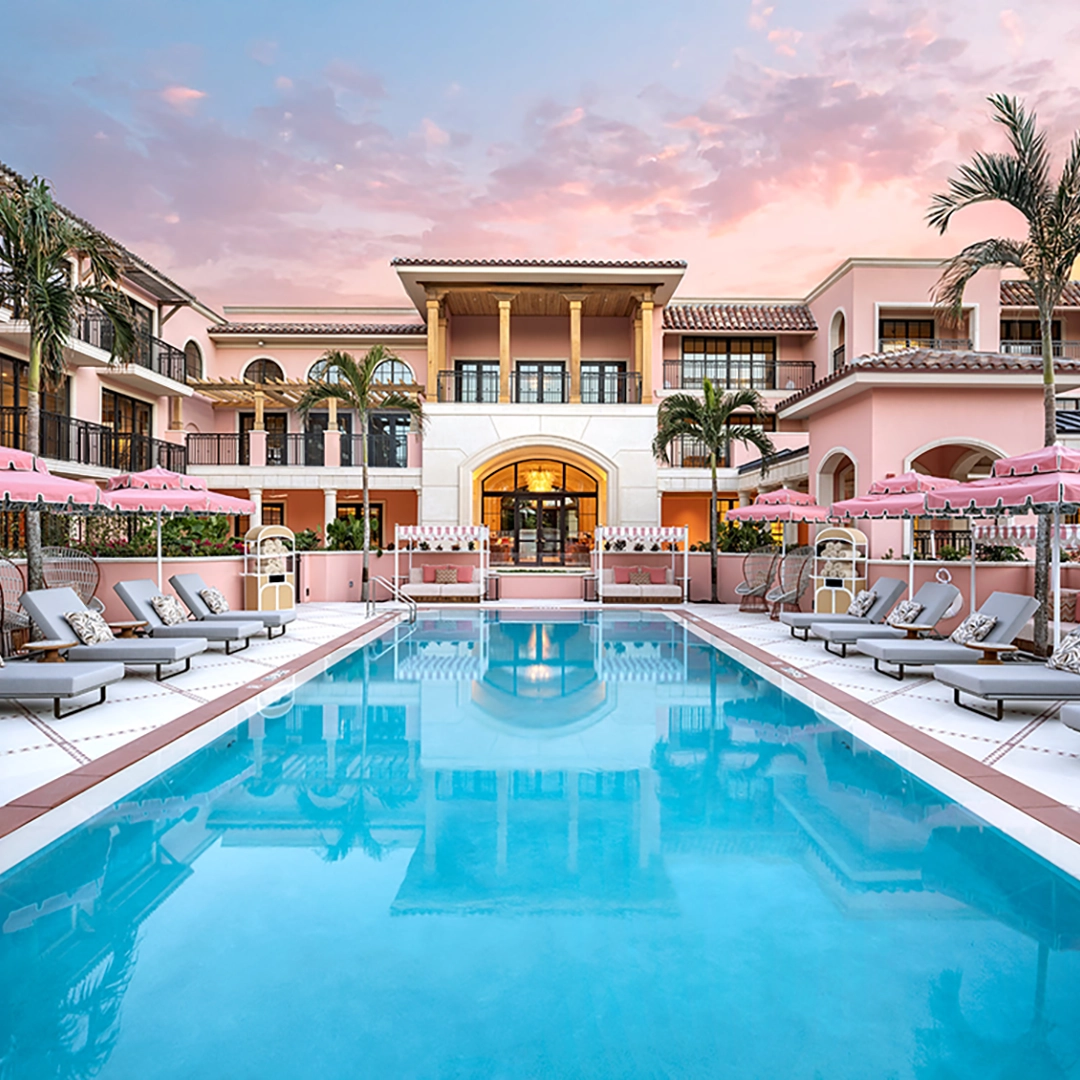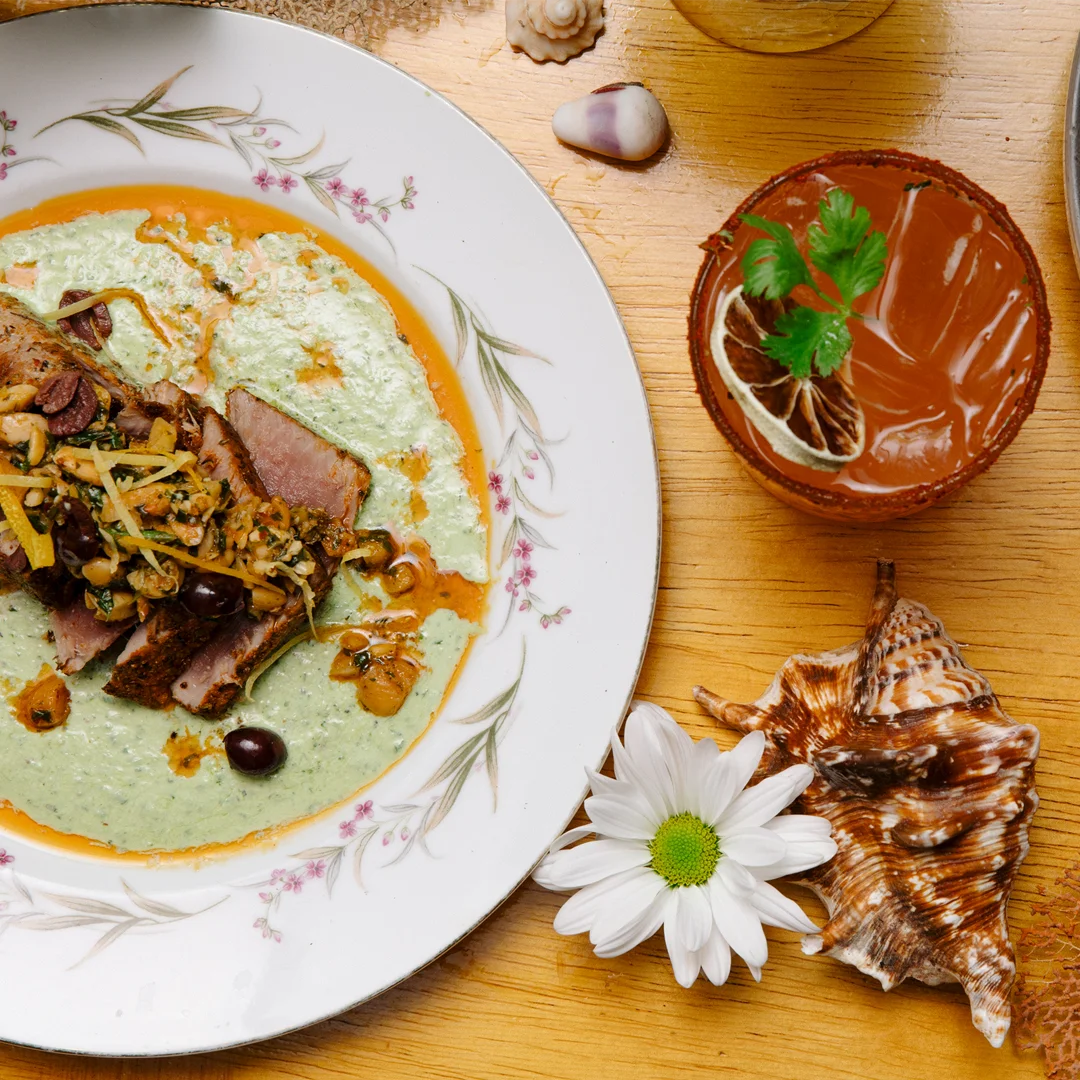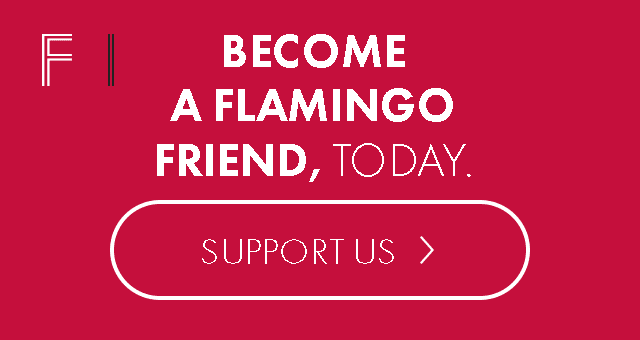by | September 22, 2025
A Floridian’s Guide to a Puerto Rico Getaway
Seven years after Hurricane Maria, Puerto Rico hasn’t just bounced back—it’s brighter than ever.
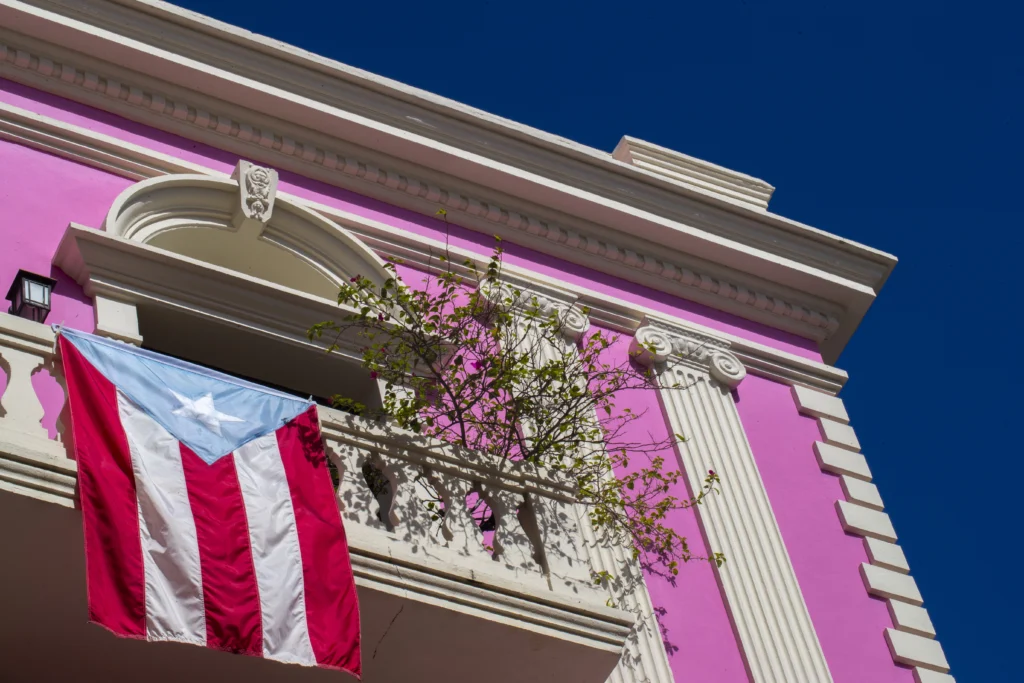
Everybody seemed to have advice about how to do it right. A bartender at La Factoría cocktail lounge told me it had to be three times, backward and with your eyes closed. The front desk person at our boutique hotel, the new Alma San Juan, said her grandmother told her once was enough. A guy watching kites fly above the great lawn at El Morro, a fort that looks more like a Caribbean castle, swore it had to be seven times or it didn’t count. In the Uber on the way to the Caribe Hilton, the driver told me no less than a dozen.
One thing was certain: At midnight on June 23, the Puerto Rican holiday of Noche de San Juan, I would walk onto the sand, backward, and launch myself blindly into the waves, as the locals have done for as long as anyone can remember. It’s said to bring luck for the year. Like many traditions, nobody can quite agree on the details.
The Caribe threw a party to mark the event—live music, dancing and pina coladas that were invented right there at the hotel bar. Then the skies opened, dumping an ocean’s worth of rain and sent everyone scurrying indoors.
And so there I was holding a frozen cocktail, soaked. It wasn’t the night I had imagined, but if I’d learned anything about Puerto Rico, it’s that you find joy on this island in ways you don’t expect. I’d waited nearly seven years to come back—my last visit taking place not long after Hurricane Maria in 2017, when much of Puerto Rico still ran on generators. Despite the devastating destruction from the hurricane, the island never lost what made it beautiful: the food, the sugar-sand beaches and the welcoming people. And now, years later, I’d returned to find that Puerto Rico had quietly, defiantly rebuilt itself—not just the hotels, the restaurants and the roads, but the spirit too. This is a story about what recovery looks like when the headlines fade, and why Puerto Rico still feels like the brightest, most enduring place I know.
Read More: Eight Must-stop Places in San Juan
Into the Mist
The road into El Yunque National Forest was just as I remembered it—steep and pitted, not so much carved from the mountainside as borrowed from it. The forest occupies a large swath of rainforest on the eastern side of the island, an hour from Old San Juan. Our little rental car shuddered around switchbacks, past men in neon vests repairing landslides that could have happened last week or seven years ago—there’s no telling in a place where the weather never really settles down. Tree ferns towered from the shoulders of the road, and vines hung like they could ensnare us. With me driving and my wife next to me, we climbed into the clouds, the jungle crowding closer, the air thick and wet and humming with frogs.
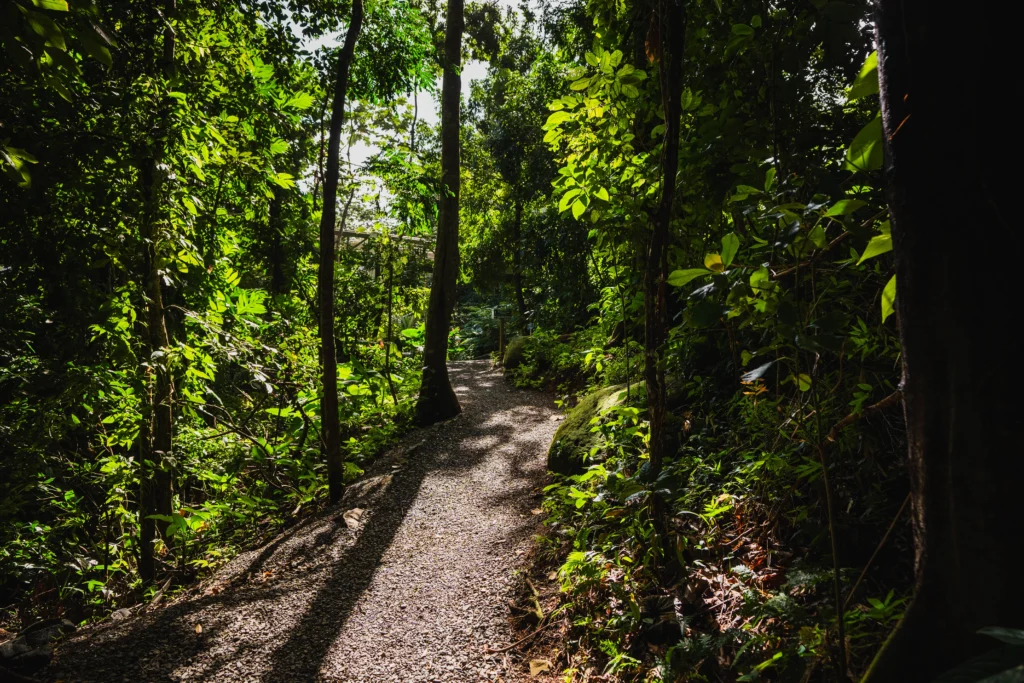
When we arrived at the trailhead, our hike began easily. A tidy, paved path wound through dripping palms and bamboo that creaked like a clapboard house in the wind. But the coqui frogs made this soundscape anything but quiet, each one calling out its name—ko-kee!—from the underbrush.
We passed mossy steps and a stone shelter built into a rock face, then up again, until a tower appeared like something from a storybook: squat and round, made of stone the color of terra-cotta, with arched slits for windows and a spiral staircase that requires walking sideways when passing anybody on the way down. I later learned the Civilian Conservation Corps, one of those New Deal-era projects, built Mount Britton Tower in 1937. At the top, the sky was the color of clotted cream, and below us, wisps of clouds raked the valley, leaving splotches of rainforest exposed with the intermittently visible summit of El Yunque Peak in the distance.
Down from the tower, we left the paved path and tourists behind. The trail turned feral—rocks slick with rain, roots crisscrossing like veins, more a stream than a trail. Two hours later, we arrived soaked and grinning at the overlook on Los Picachos mountain. While there was nothing to see except a wall of white-gray mist, it still felt earned.
I’d returned to find that Puerto Rico had quietly, defiantly rebuilt itself—not just the hotels, the restaurants and the roads, but the spirit too.
—Eric Barton
Afterward, we descended back to sea level, aching and hungry, and made our way to Kioskos De Luquillo. The series of food stalls at Luquillo Beach came recommended by the owner of Alma, a new boutique hotel in Old San Juan and our home for the week. Kioskos is the kind of place you might mistake for a strip mall if not for the smells: fried plantains, garlic shrimp and roasted pork. Locals claimed spots in the shade with cold Medallas and Styrofoam containers. We joined them, ordering mofongo—a hearty mashed plantain dish—topped with shrimp and chicken. We devoured it as the breeze cut the heat and salt water lapped just beyond the palms.That night, we ate at Andaluz, Alma’s restaurant, enjoying a dish of earthy mushrooms underneath a bright cured egg yolk and a platter of crispy-edged fideua—the pasta version of paella—dotted with Iberian pork and topped with grilled shrimp. We scraped our plates shamelessly.
I thought again about the last time we were here, after the storm. We never would have eaten like this then. The city was half dark. Many restaurants were still boarded up, with no sign they were coming back. But there we were, in a dining room full of life and clinking wine glasses, and it felt like something permanent had returned.
Where the Light Comes Back
We spent our final day doing very little and feeling very good about it. There’s a tiny infinity pool on the roof of Alma perfectly situated for maximum idleness. We took turns sinking into the water and gazing out at Plaza Colón below, watching a cruise ship dock in the harbor beyond and pigeons plunk down across rooftops. The breeze carried sea salt, the scent of vacation.
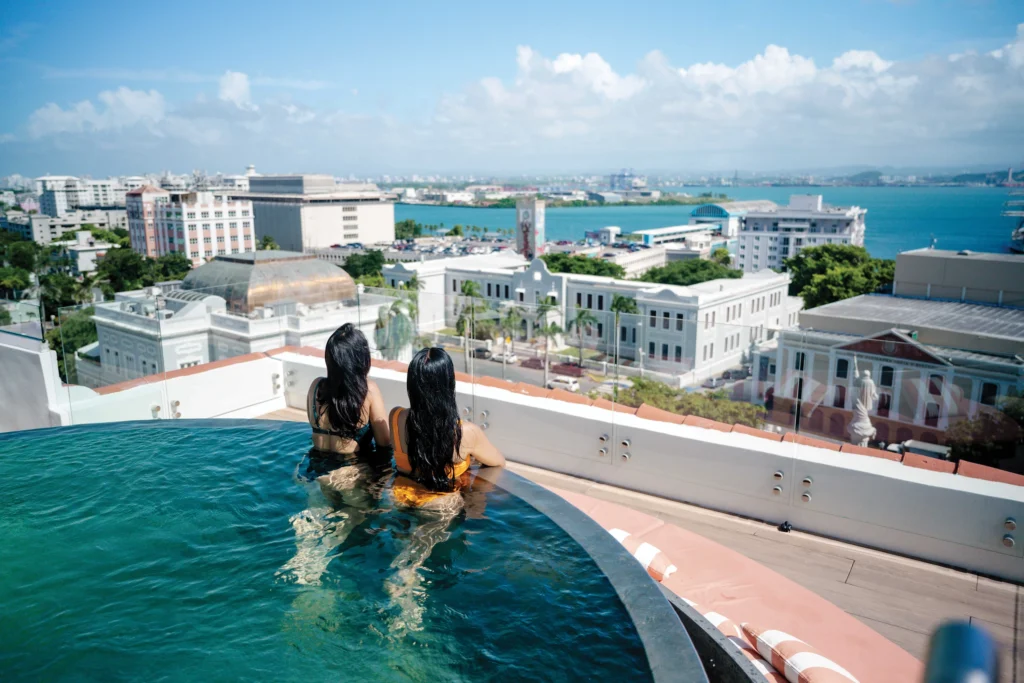
Later we walked to Verde Mesa for lunch, a laid-back spot where the power cut in and out the last time we were there, hot and sweltering with no AC. This time, in the cool room with light spilling across mismatched antiques, we ordered kofte over stewed beans and a salad that tastes like Puerto Rico’s version of spring: radishes, tomatoes and a vinaigrette sharp enough to wake you up.
Dinner that night was at Māro, the latest from chef Mario Pagán. The Iberian pork sando arrived with a crackling edge and a smoky depth. It was, without question, the best thing we ate the entire trip—at least, until dessert arrived. The chocolate and hazelnut bar, layered like a Viennese opera cake, disappeared in seconds.
Driving back to Old San Juan, we realized something: We never got our Noche de San Juan jump at the Caribe. So we stopped at the public lot just before the towering Puerto Rican capitol building. We left our shoes in the car and hurried to the water. We waded in at first, ankle-deep, hand in hand. We turned around, and waves crashed into our backsides. We counted to three. No drums. No crowds. Just us, laughing like kids
And that, I think, is what Puerto Rico has always been—more than just its beaches and bars, more than the storms or the headlines. It’s joy, spontaneous and unexpected. And it’s still there, waiting for you to fall in.
For more travel inside the state or just a stone’s throw away from Florida, click here.
About the Author
Eric has been a journalist in Florida for two decades, including stints at newspapers in Fort Pierce, Stuart and Sarasota. His role at Flamingo includes everything from interviewing chefs to first-line editing on cover stories and penning our monthly culinary newsletter, Key Lime.

